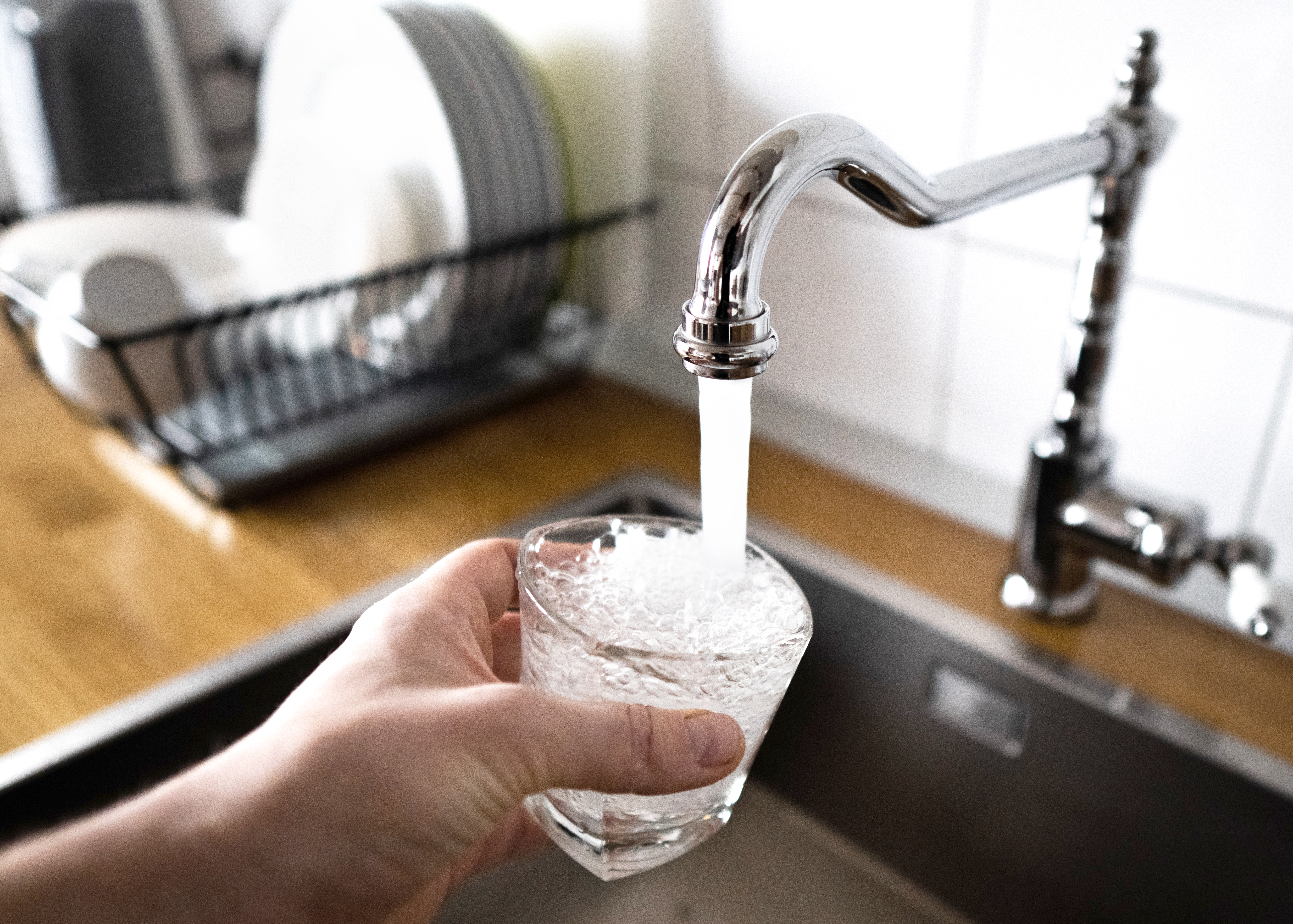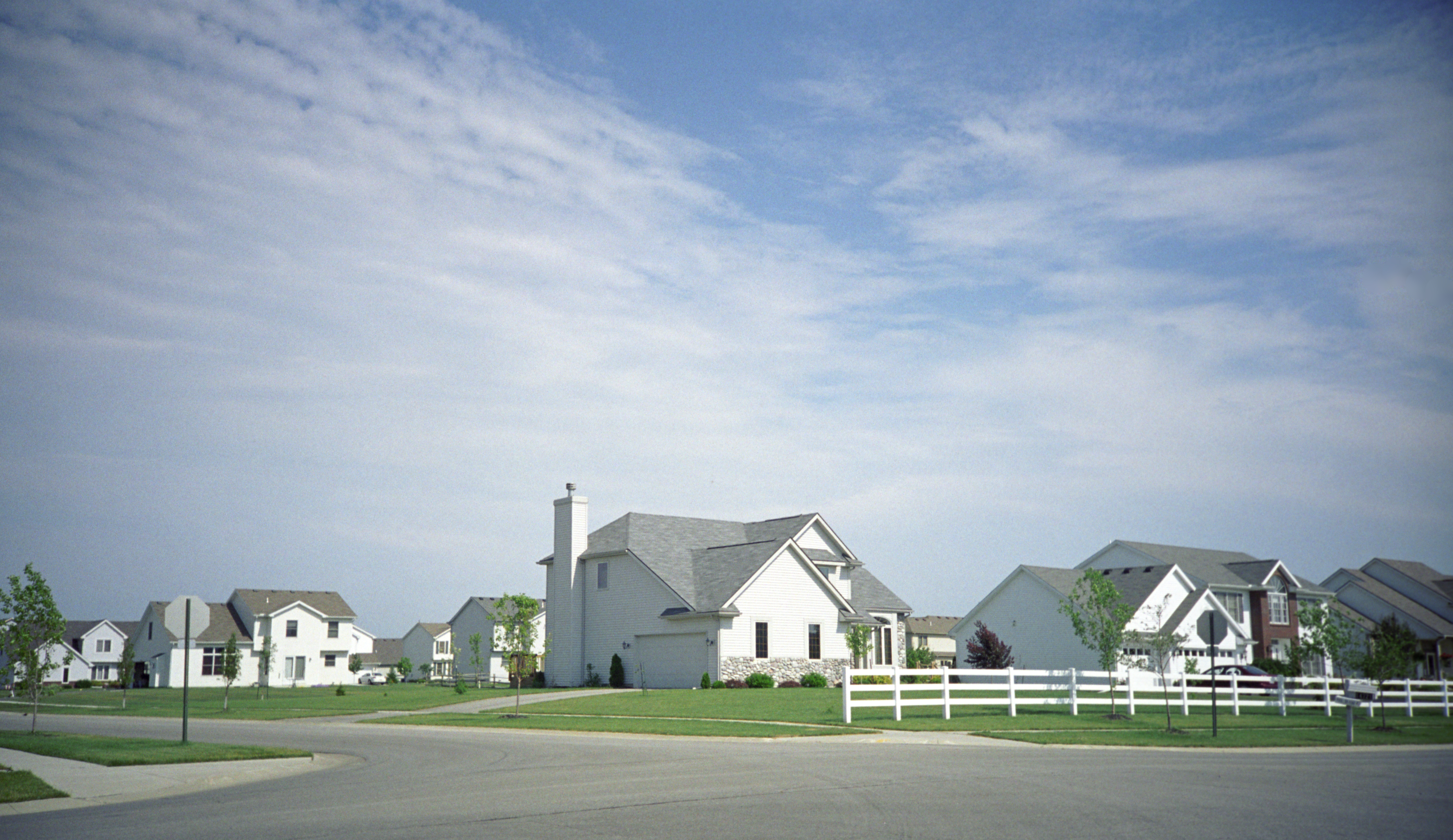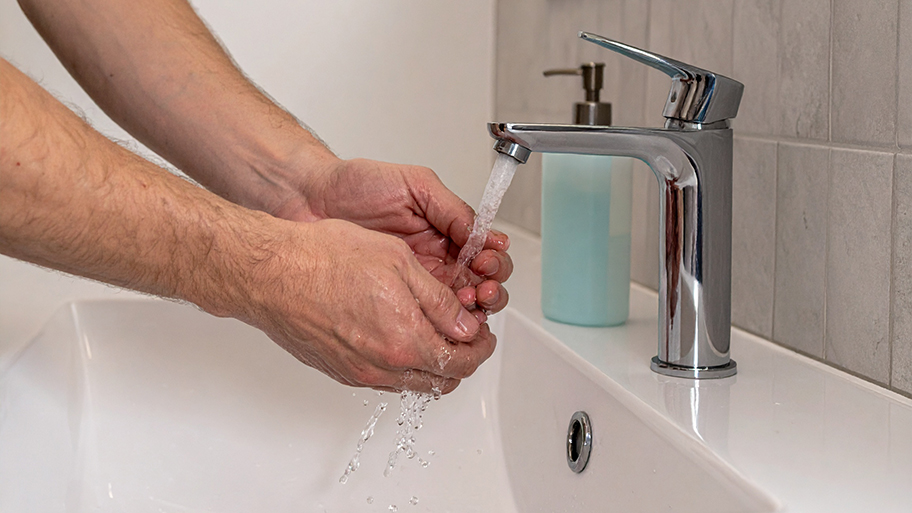
Learn how much plumbers cost in Columbus, Ohio. Discover pricing for faucet repairs, pipe work, and emergency services, plus how you can save money.
Plumbing costs depend on your project and location. Check with a local pro for your specific job.
Main greywater system cost factors include system size, type, installation complexity, and optional add-ons such as smart automation.
Pros charge hourly rates of $50 to $150, depending on your location and the project complexity.
Installing a grey water system can increase your home’s efficiency and reduce your water bills by 20% to 40%.
Always factor in permit fees of $50 to $1,000, depending on your local codes, before starting your project.
This article was created using automation technology and thoroughly fact-checked and edited by an Angi Editor in accordance with our AI policy.
On average, grey water system costs range from $2,200 and $5,500, with an average installation cost of $4,000 for most homes. Homeowners may pay as little as $600 for a basic DIY setup or up to $20,000 for advanced, automated systems. Costs are calculated per system, not per square foot.
A grey water system helps homeowners save water, lower utility bills, and boost sustainability. This guide will help you understand every aspect of grey water system cost, what drives pricing, and how to make the best investment for your home.
The size of your grey water system directly impacts the total project cost. Systems are rated by the gallons per day they can process. A small system may serve a single bathroom or laundry, while a large system can handle all eligible water sources in a multi-bathroom home.
Single-family homes need systems that process between 50 and 200 gallons per day. Larger properties or multi-unit dwellings may require systems with greater capacity, which increases both equipment and installation costs. Selecting the right size ensures the system meets your household’s daily water use without overspending.
| Gallons per Day | Description | Average Cost |
|---|---|---|
| 25–50 | Small system for one appliance or room | $500–$2,500 |
| 50–150 | Medium system for small homes | $2,000–$5,000 |
| 150–300 | Large system for larger families/homes | $4,000–$9,000 |
| 300+ | Extra-large/multi-unit or commercial use | $8,000–$20,000+ |
The type of grey water system you choose will shape both your upfront installation cost and long-term expenses. Simple diverter systems use gravity and basic plumbing to redirect water, making them the most affordable. Branched drain systems are slightly more complex, distributing water to multiple zones. Pumped and automated filtration systems offer higher capacity, convenience, and water quality, but cost more to install and maintain.
Manual systems are less expensive but require more hands-on effort, while automated systems provide ease of use and efficiency. Each system type also has pros and cons regarding suitability for new builds vs. retrofits and expected lifespan.
| System Type | Description | Average Cost | Cost Impact | Pros | Cons |
|---|---|---|---|---|---|
| Simple diverter | Redirects water with valves/gravity | $500–$2,500 | Low | Low cost, easy to install, minimal maintenance | Limited capacity, manual operation |
| Branched drain | Distributes to multiple areas | $1,000–$4,000 | Moderate | Good for irrigation, scalable | Requires planning, more labor |
| Pumped system | Uses pump for pressure/distance | $4,000–$10,000 | High | Flexible placement, serves larger homes | Needs electricity, higher maintenance |
| Automated filtration | Filters/disinfects, smart controls | $8,000–$20,000 | Highest | Best water quality, automated, low-touch | Expensive, complex, higher repair costs |
Understanding what drives grey water system costs helps you plan and budget confidently. Let’s break down the main factors.
Labor is a significant part of the overall cost. Most installations require a licensed plumber, and for more complex systems, a general contractor or irrigation specialist may be involved. Hourly rates range from $50 to $150, depending on your region and the professional’s expertise. More intricate systems increase the hours and number of specialists required, raising total labor fees. Unionized labor markets also tend to have higher rates.
Permits are often required for grey water system installation. Fees vary by municipality but range from $50 to $1,000. The permitting process may involve plan submission, inspections, and waiting periods, which can affect your timeline and add inspection costs. Skipping permits risks fines, forced removal, or system shutdown.
Where you live affects the total grey water system cost. Labor and material prices are often higher in urban areas and regions with strict plumbing codes. Local water regulations may require added filtration or specific system designs, increasing both time and expense. Installing the system in a basement, crawlspace, or outdoor yard can also influence costs, depending on accessibility and terrain.
Upgrading your system with advanced features can boost both performance and price. Popular add-ons include filtration and disinfection (UV lights, chlorine injectors, advanced filters), smart controls (timers, sensors, remote monitoring), and integration with irrigation or rainwater harvesting. Custom tanks or plumbing, as well as landscape integration, also add to the cost.
Other factors that may influence your grey water system cost include:
System complexity and level of customization
Accessibility of existing plumbing and installation site
Site preparation, such as excavation, demolition, or landscaping
Delivery of new equipment and removal of old materials or debris
Design and engineering fees for custom systems
Inspection costs during and after installation
Delays due to weather, permitting, or unexpected site issues
Beyond the main installation price, homeowners should factor in ongoing and occasional expenses that affect the lifetime cost of a grey water system.
Manufacturers and installers may offer warranties ranging from one to ten years. These can cover parts, labor, or both, with extended warranties available for an extra fee of $100 to $500, on average. A robust warranty can reduce future repair or replacement costs, especially for complex systems.
Grey water systems with pumps or automation use electricity, which adds a small monthly cost. Most systems save on water bills by reducing potable water use, which can offset some operating expenses. Consumables like filters or UV bulbs need periodic replacement, costing $20 to $200 per year. Some smart systems may have subscription fees for remote monitoring services.
Regular maintenance keeps your system running smoothly. Tasks may include cleaning or replacing filters, checking pipes, flushing the system, and inspecting pumps. Maintenance frequency depends on system type—simple diverters need minimal attention, while automated systems require more.
Expect to spend $100 to $800 per year on maintenance, whether you do it yourself or hire a pro. Common repairs, such as fixing leaks or replacing pumps, can cost $150 to $1,000, depending on the issue.
Sales tax on materials and equipment may apply, depending on your state. Some states or municipalities offer rebates, incentives, or tax credits for installing grey water systems. These programs can lower your net cost. Be sure to keep receipts and documentation to claim any available benefits.
Installing a grey water system may affect your homeowner’s insurance. Some policies require notification or additional coverage for water-related systems. Upgrading your policy could slightly increase premiums, especially if your insurer wants proof of professional installation or regular maintenance.
Older or malfunctioning grey water systems present a choice: repair or replace. Minor repairs, such as fixing leaks or replacing a pump, cost $150 to $1,000. If your system is outdated, inefficient, or repair costs exceed half the price of a new installation, replacement is recommended.
Warranty status can influence your decision, as covered repairs reduce out-of-pocket costs. The 50% rule is a good guideline: if repair costs are more than half the cost of replacement, opt for a new system.
Investing in a grey water system often pays off over time. Homeowners can expect water bill savings of 20% to 40%, depending on system capacity and local water rates. The average payback period is five to 10 years, especially in regions with high water costs or drought restrictions.
While a grey water system may not directly increase resale value as much as a kitchen remodel, it can make your home more appealing to eco-conscious buyers. Additional benefits include increased efficiency, support for sustainable landscaping, and reduced strain on municipal water systems.
Let’s look at actionable ways to keep your grey water system cost under control:
Research and apply for local rebates or incentives to offset upfront expenses.
Choose a system size and type that matches your household’s actual water use—avoid overspending on unnecessary capacity.
Get multiple quotes from licensed local plumbing professionals to compare pricing and services.
Schedule installation during off-peak seasons when contractors may offer discounts.
Perform basic maintenance tasks yourself, such as cleaning filters, to save on ongoing costs.
Opt for modular or upgradeable systems so you can expand as your needs grow.
Install a basic system now with the option to add automation, filtration, or expanded capacity later. Modular designs make future upgrades easier and more affordable.
A basic DIY system, using diverter valves and basic plumbing, can cost as little as $500 to $1,500 for materials and permits. You’ll need basic plumbing skills, tools, and safety gear. DIY projects take more time—often several days or weekends—and you’ll be responsible for meeting code requirements and passing inspections.
Hiring a professional adds labor costs but ensures correct installation, compliance, and warranty coverage. Complex systems, retrofits, or irrigation integration are best left to licensed pros.
Installing a grey water system is a complex project that involves plumbing, filtration, and code compliance. Here’s why it’s best to hire a pro for the job:
Pros know how to properly design and install systems ot prevent leaks, backups, and contamination.
Working with a pro ensures your project complies with local plumbing codes and zoning requirements.
Reputable pros are insured and offer warranties for added peace of mind.
DIY installation can lead to water damage, inefficiency, and costly future repairs.
Professionally installed grey water systems maximize water reuse, reduce utility costs, and can increase your home value.
If you want to assist with your grey water system installation, consider taking on the following tasks:
Clear furniture, planters, and decor from areas where excavation and piping will occur.
Trim plants and shrubs that could limit access to the work area.
Keep tools and supplies organized and easily accessible for the pro.
Get hoses, sprinklers, and garden areas ready for the initial run after installation.
Discuss with your pro which type of system you’d like to install, such as a simple diverter or an automated filtration system.
Provide your pro with the general layout and size of your yard so they can plan the pipe route and tank placement.
Ask about add-ons, such as filtration upgrades, automated pumps, or smart irrigation controls.
Let your pro know about any related concerns, such as landscaping adjustments, fencing, or garden beds.
Home is the most important place on earth, which is why Angi has helped more than 150 million homeowners transform their houses into homes they adore. To help homeowners with their next project, Angi provides readers with the most accurate cost data and upholds strict editorial standards. We extensively research project costs to develop the pricing data you see, so you can make the best decisions for you and your home. We rely on reputable sources, including the U.S. Bureau of Labor Statistics, academic journals, market studies, and interviews with industry experts—all to ensure our prices reflect real-world projects.
Want to help us improve our cost data? Send us a recent project quote to [email protected]. Quotes and personal information will not be shared publicly.
From average costs to expert advice, get all the answers you need to get your job done.

Learn how much plumbers cost in Columbus, Ohio. Discover pricing for faucet repairs, pipe work, and emergency services, plus how you can save money.

Learn about main water line repair costs in Columbus and what affects pricing to be prepared before you start getting estimates.

Discover the leading factors affecting your main water line replacement cost in Columbus, including length, material selection, and installation details.

Replacing or upgrading plumbing in your home? Make sure you know how to measure pipe size accurately to avoid buying the wrong materials.

Learn about the 4 primary types of copper pipes, their applications, advantages, and limitations in this informative article.

Fixing a leaky faucet starts with knowing which type of faucet you have. Follow these steps to learn how to fix a leaky faucet in no time.